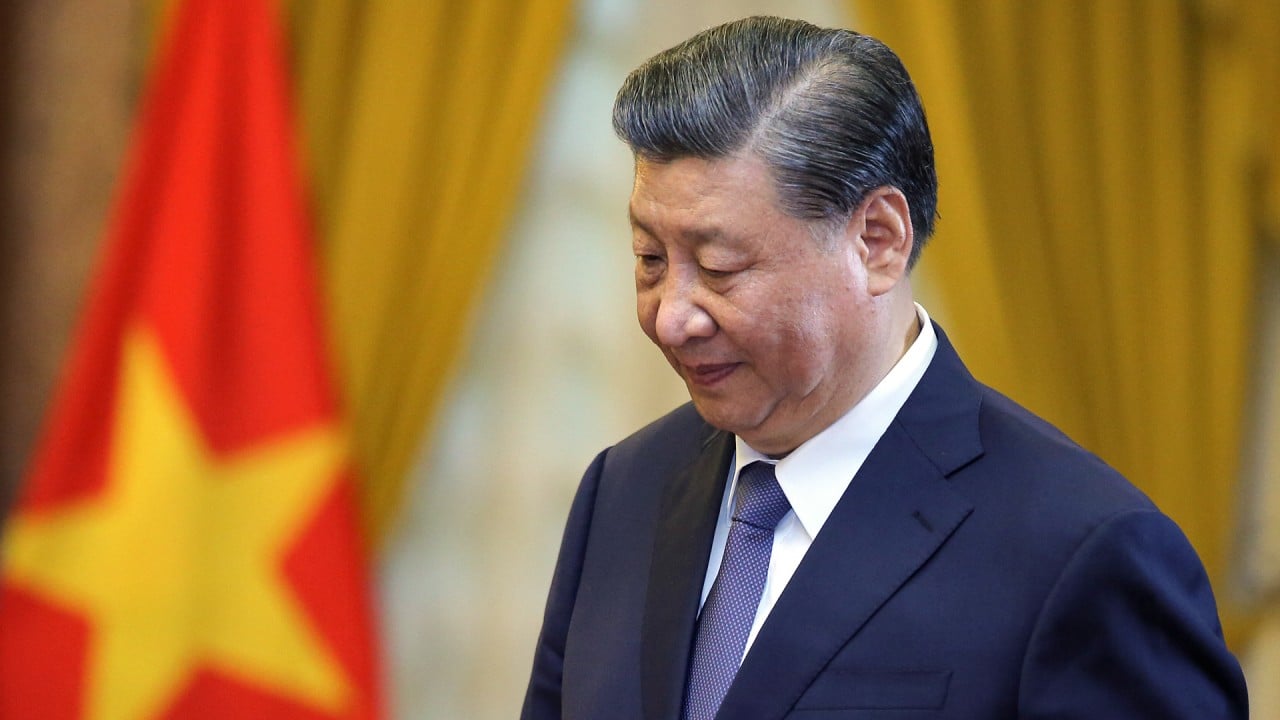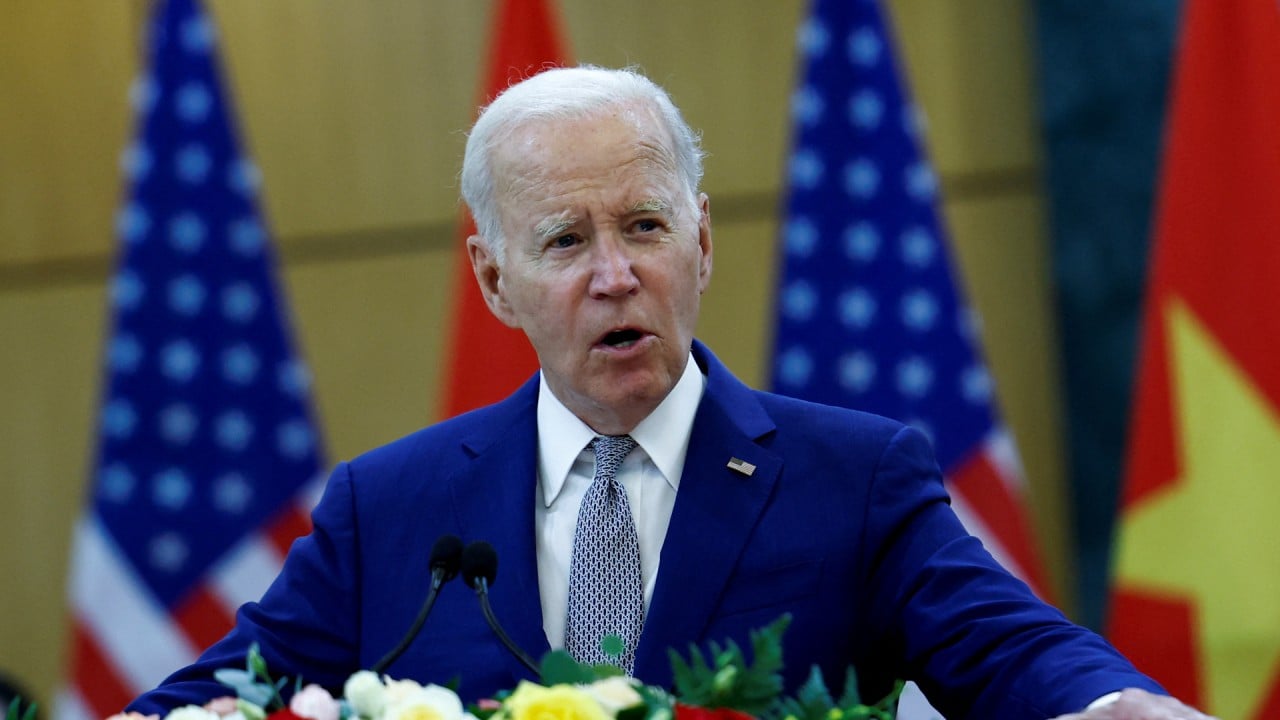
China has drawn its territorial line in the Gulf of Tonkin. Is the South China Sea next?
- Beijing has released a series of points to define its waters along its southern coast
- The result is a series of straight lines that some observers say extends its maritime area
Previously, China had not specified a baseline but, under the United Nations Convention on the Law of the Sea (Unclos), its maritime zone was measured from its low-water line along the coast and was curved.
Now China is defining its territorial waters extend seaward up to 12 nautical miles from the straight lines formed by the seven points, which some analysts say covers a bigger area.
Beijing said the new baseline was in line with Unclos – which allows for straight lines in some cases – as well as a demarcation agreement with Vietnam for the Gulf of Tonkin, which was signed in 2000.
It is also in line with China’s Law on the Territorial Sea and the Contiguous Zone adopted in 1992, which says the baseline should be straight.
On its WeChat account, the Chinese foreign ministry’s department of boundary and ocean affairs said the move was necessary to exercise China’s sovereignty and jurisdiction.
“The announcement of new baseline … is an important part of China’s efforts to improve the delineation of the baseline of the territorial sea, with a view to better serving the economic development of the provinces and regions along the Beibu Gulf, such as Guangxi, Guangdong and Hainan, and striving to realise the strategic goal of building a strong maritime power,” the department said.
Chinese foreign ministry spokesman Wang Wenbin said on Friday that China had a “legitimate and lawful right” to delineate the new baseline.
Under their agreement signed in 2000, China and Vietnam agreed on a delimitation line in the gulf, giving Vietnam 53.23 per cent of the gulf and China 46.77 per cent. The two sides also agreed to establish a joint fishing regime in that area.
Vietnam’s foreign ministry declined to say on Thursday whether the new base points would jeopardise the two-decade-old agreement, stating only that international law and the rights and interests of other countries must be respected.
Kentaro Nishimoto, an international law professor with Tohoku University in Sendai, Japan, said the new baseline would allow China to convert a large part of the northern South China Sea into its internal waters, where it could exercise more control.
“This leads to a fairly large area that was formerly China’s exclusive economic zone being converted into the territorial sea or internal waters, where it could exercise more powers under international law,” Nishimoto said.
There have also been concerns that Beijing could restrict ship movements in the area around Hainan Island.
“Under Unclos, the rights of innocent passage and transit passage remain even if a straight baseline is established,” Nishimoto said.
“If China adopts a different interpretation and seeks to restrict the navigation of ships in this area, this would have an impact on the navigational rights of all other states.”
Jay Batongbacal, director of the Institute for Maritime Affairs and Law of the Sea at the University of the Philippines Diliman, said the new baseline in the gulf was “clearly excessive”, with some places beyond the 24-nautical mile limits from shore.
“It is indicative of China’s overall attitude towards expanding its territorial claims into the sea, attempting to increase its internal waters as much as possible, and abusing its rights as a coastal state under Unclos,” Batongbacal said.
“This attitude of playing fast and loose with the baselines is likely going to be reflected in its future actions toward the islands in the South China Sea,” he said, referring to the future delineation of baselines elsewhere in the strategic waterway.
So far it has announced three sets of baselines for its maritime territory. These include points on the outer edge along and outer islands off the coast of China until on the eastern tip of the Shandong peninsula that faces the Korean peninsula across the Yellow Sea, as well as lines completely enclosing the Paracels.
In 2012, when territorial spat over the East China Sea escalated, Beijing also declared a set of base points near the Japanese-held Diaoyu Islands, also known as the Senkakus.
It has not set baselines for the Pratas Islands, also known as the Dongsha; the Spratly, or Nansha, Islands as well as the Zhongsha Islands in the South China Sea.
Hanoi’s low-key approach may be central to muted confrontations with Beijing
Nishimoto, from Tohoku University, said Chinese law assumed that straight baselines would be designated for all of China’s coastline but this had not been done in reality for some parts of China’s coast.
“[This has] raised questions about whether a further designation for the maritime features in the South China Sea will follow in the near future,” he said.
But Ding Duo, an associate research fellow at the National Institute for South China Sea Studies in Hainan, said Beijing was unlikely to rush to do this.
“There are more factors to take into account when it comes to the Spratly Islands, over which China admits there are disputes over the territorial sovereignty and maritime delimitation,” he said.
He said concerns over possible restrictions on navigation in the region were overstated.
“The only impact would be on foreign warships, which would be required to seek permission from China, but in reality, I don’t think any foreign warships would have to travel into the gulf.”



